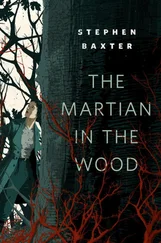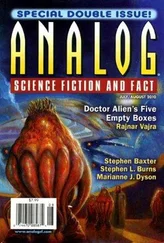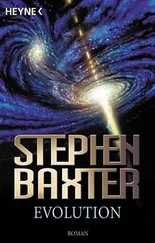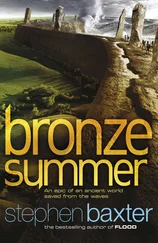1 ...7 8 9 11 12 13 ...31 Single-minded as ever, Spielberg set out to make his first feature, a science fiction adventure called Firelight . He wrote the first draft of the script in a night; the story of scientists who, investigating lights in space, provoke an alien invasion during which the visitors steal an entire city from earth and reassemble it on another planet.
Every weekend for a year, Spielberg worked on the film with anyone he could cajole or bully into helping. No girl, no football games, no summer jobs diverted him. His enthusiasm and persistence were infectious. When he needed someone exploded in the living room, Leah opened cans of cherries and stood by as her son balanced them on one end of a board and had someone jump on the other. She never got the stains off the furniture. Once again the airport closed a runway for him. A local hospital where he had worked as a volunteer in his holidays lent its corridors for a shot, though Spielberg found the experience disconcerting. ‘I saw things that were so horrifying that I had to fantasise that there were lights, props, make-up men, just to avoid vomiting.’
Once he was finished, Spielberg edited the film to 140 minutes. Actors had come and gone over the year, but he persuaded students at the nearby University of Arizona to post-synchronise the speaking parts as he ran the film on a sheet stretched over one end of the den. The Arcadia school band recorded some music for it.
The result, though he now deprecates it as ‘one of the five worst films ever made’, was good enough to screen for an audience. He persuaded his father, who had already invested $300 in the project, to gamble another $400 for the hire of a local cinema. Spielberg rented a limousine to bring him to the theatre with Leah, who had cudgelled enough friends, relatives of the actors, ex-Boy Scouts and local film fans to fill the seats. Most stayed to the end, and Arnold pocketed $100 profit.
Spielberg’s entry into the cinema was also his exit from childhood and Phoenix. Arnold had decided on another move, this time to join IBM at Saratoga, ten miles from San Jose, near San Francisco. Almost immediately, they packed up, and set out for California.
3 Amblin’ Towards Bethlehem
Show business is high school plus money.
Hollywood saying
AFTER THE parched landscape of Arizona, Spielberg loved the hills and vineyards of Saratoga. But this move finally wrecked the rickety marriage of Leah and Arnold Spielberg. Arnold had barely finished sketching a design for the house he hoped to build when the couple separated. Leah returned to Phoenix and started divorce proceedings. The separation wrenched Steven, who developed insecurities about marriage and a sense of loss that would be reflected in his films, which are filled with sons seeking fathers and children deprived of their families.
Saratoga also exposed him to anti-Semitism for the first time. Unlike her parents, Leah hadn’t kept a devout household. Spielberg called their style of Judaism ‘storefront Kosher’. When the rabbi called, the mezuzah was put on the door frame and the menorah on the mantel, and removed after he left. Spielberg understood vaguely that his mother’s family fled from Odessa to escape pogroms. His first memory of numbers is of a man, one of a group his grandmother was tutoring in English, trying to entertain him by displaying his concentration camp tattoo, and illustrating by turning his arm to show how 6 upside-down became 9.
As a boy, Spielberg was embarrassed by his heritage. ‘My grandfather would come to the porch when I was playing football with my friends and call out my name in Hebrew. “Schmeul! Schmeul! Dinner’s ready.” They would say, “Isn’t that your place? Who’s this Shmoo?” I’d say, “I don’t know. It’s not me he’s calling.”’ To anyone who asked, his name was German. He resisted the pressure from his grandmother to conform to what he called ‘the Orthodox mould’, but at the same time the religion’s emphasis on family values fed his need to belong. As an adult, he became a classic Jewish father – and, sometimes, mother. Though no enthusiast for cooking, he would prepare Leah’s recipes at home, and occasionally get up early on location to make matzoh for 150 people, an almost sacramental act that reaffirmed the production unit as his surrogate family.
The America in which Spielberg grew up accepted racial discrimination as a fact of life. Medical and law schools operated quotas for Jewish students, and colleges had Jewish fraternities. One still occasionally encountered a discreet ‘Christian Only’ in ‘Positions Vacant’ ads. Many golf clubs operated a racial ban. Realtors wouldn’t sell houses in certain districts to Jewish families. ‘Neighbourhoods for [a Jew],’ wrote William Manchester, ‘like his summer camps and winter cruises, would advertise “Dietary rules strictly enforced.”’
In Phoenix, even as one of only five Jewish children in his school, Spielberg hadn’t stood out, but Saratoga was actively anti-Semitic. Pennies were tossed at him in study hall, and he was mocked so much in gym that he gave up sports altogether; admittedly no great sacrifice for him. The Spielberg house, the only one not to display lights at Christmas, was just a walk away from the school, but after he’d been bullied on the way home, Steven insisted Leah pick him up each day. Once, in fury at the slurs of a neighbouring family, he smeared their windows with peanut butter. Explaining his decision to film Alice Walker’s book The Color Purple , rather than choosing a black director, he would say, ‘I felt I was qualified because of my own kind of cultural Armageddon, even though as a child I exaggerated the pain – as all children will do – and I became the only person discriminated against in history as a child.’
Because of this discrimination, but from a lack of academic interest as well, Spielberg’s grades, never high, sagged still further in Saratoga. When he graduated from high school with a dismal C average, it was in the knowledge that no major college would accept him. And not being in college meant that he was eligible for the draft. ‘I would have done anything to stay out of Vietnam,’ he said. But this wish dovetailed so neatly with his ambition to become a film director, ideally before he was twenty-one, that they soon fused in his mind.
The moment the 1963 summer vacation commenced, Steven persuaded Arnold to let him spend it with an uncle in Canoga Park, a suburb of Los Angeles. His uncle lent him his 1957 Plymouth convertible, but only on the understanding he stayed in the slow lane, going no faster than forty-five m.p.h. Since the speed limit in the fast lane in those days was sixty-five, other cars rocketed by, but Spielberg didn’t care. He was in heaven. Disneyland had opened in 1955, and he made the first of many long drives to the suburb of Anaheim where Walt Disney had built his fantasy world.
Los Angeles, a horizontal city defined by freeways, opened Spielberg’s eyes to linear motion. The boy who was uncomfortable with the written word discovered in movement a handwriting he could read and in which he could, he sensed, become fluent. ‘Looking at most modern cities involves seeing a lot of buildings,’ writes the architectural historian Charles Moore. ‘Looking at Los Angeles involves experiencing a lot of rides … Even the strictly architectural sights of Los Angeles are experienced more than seen, often in carefully controlled time… They are theatre as much as architecture.’ The concept of the ride became central to Spielberg’s cinematic vision. He designed rides for Disneyland and the Universal Studios tour, and in 1994 an LA journalist writing of the Dive! ‘total experience’ restaurants he opened with Jeffrey Katzenberg would comment that Spielberg ‘does not so much create movies as he assembles theme-park rides in the shape of movies’.
Читать дальше












